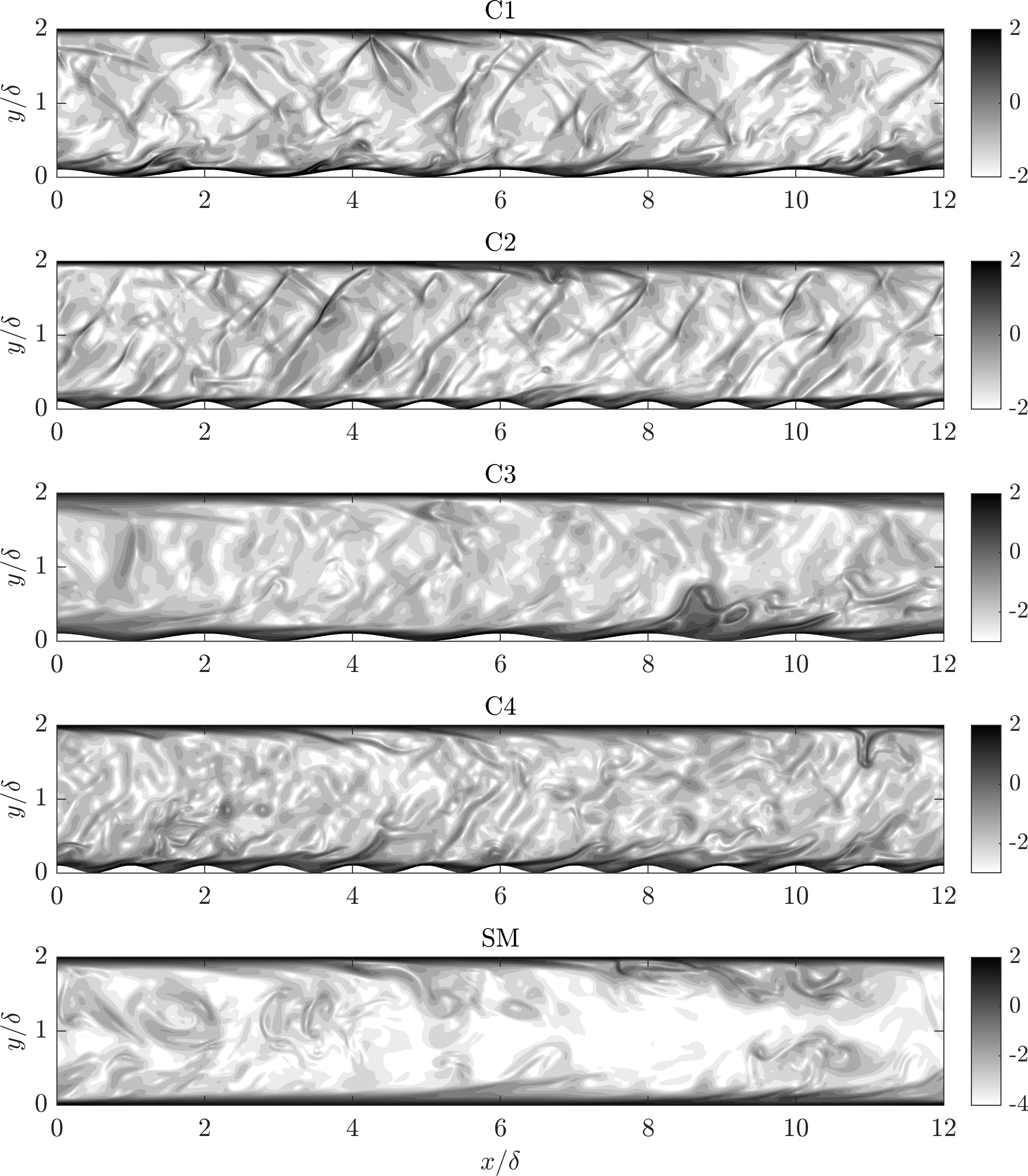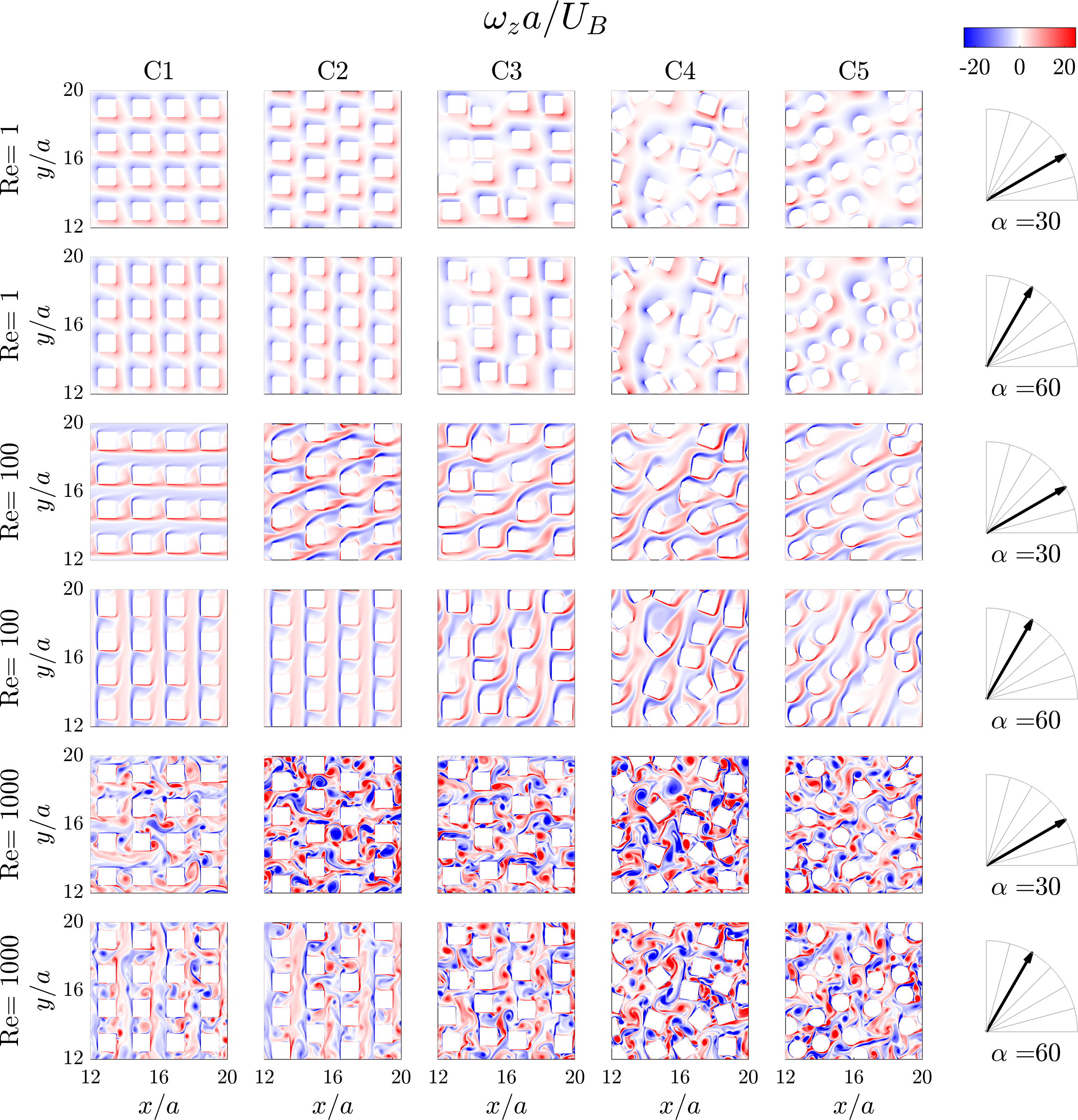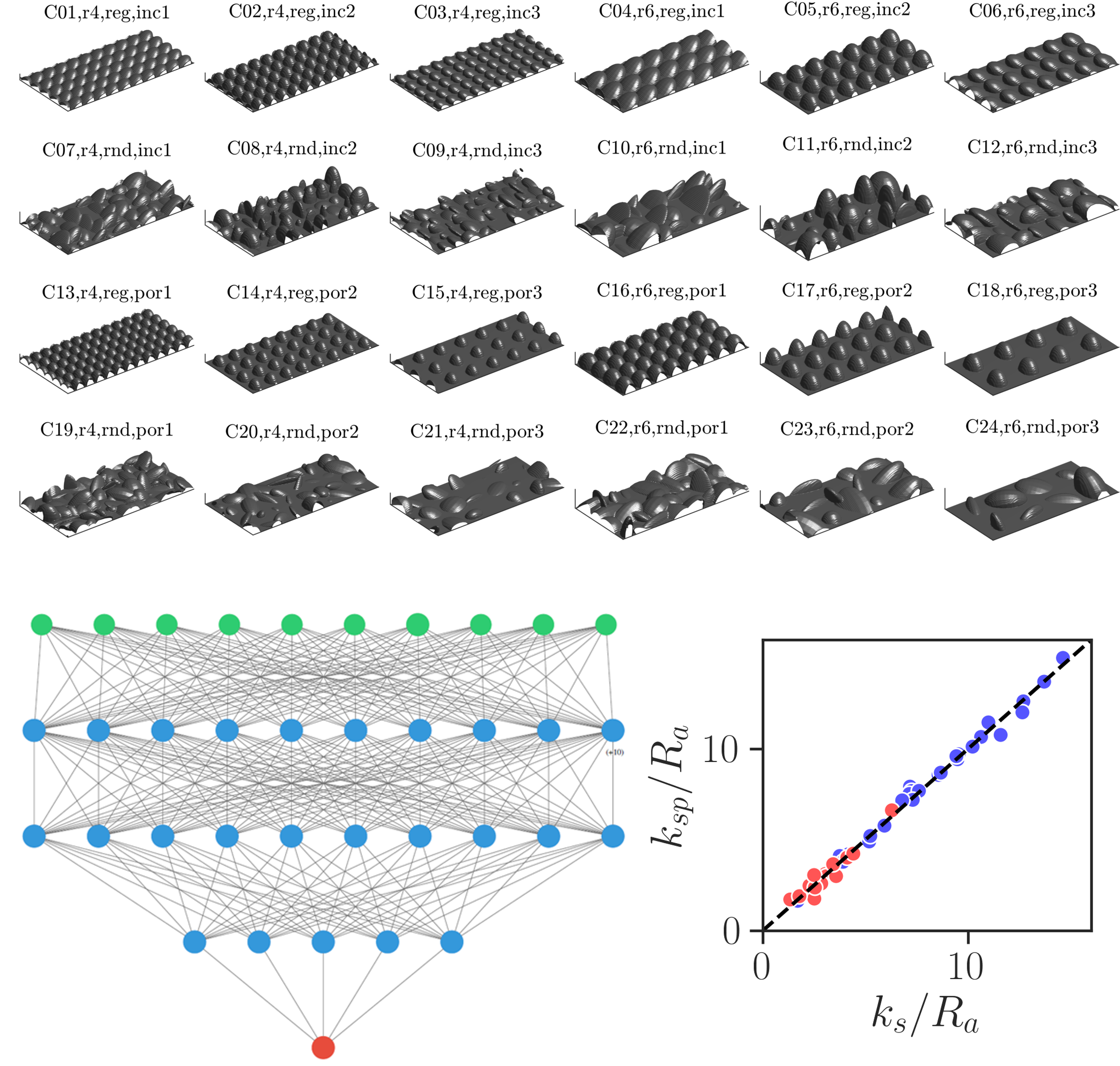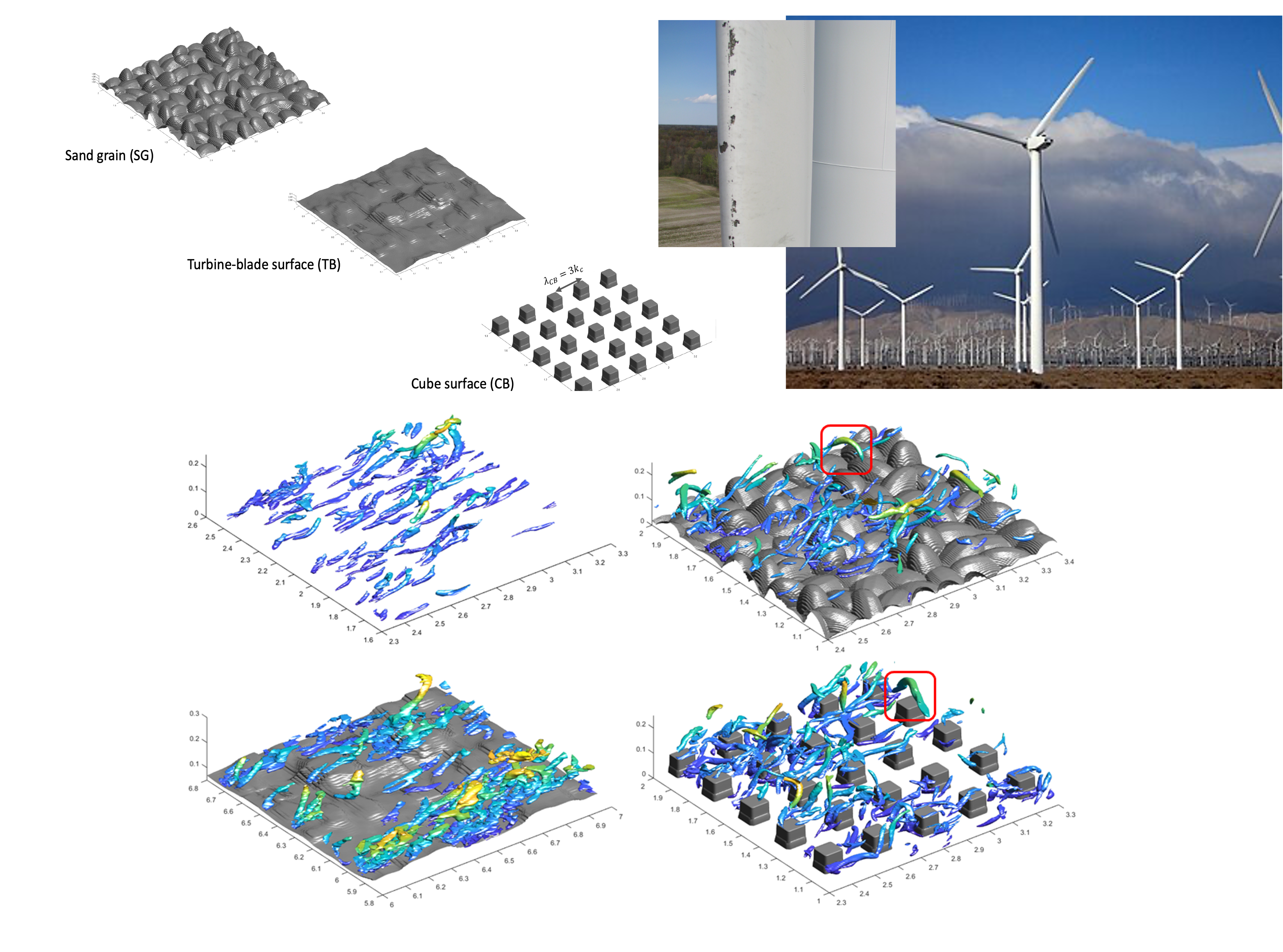Research
Funding Agencies
- Air Force Office of Scientific Research (AFOSR)
- National Science Foundation (NSF)
- Office of Naval Research (ONR)
Projects
Innovation: High fidelity simulation of supersonic turbulent channel flow over rough walls. Provides the first report of Reynolds stress budgets in such flows.
Description: This study uses direct numerical simulations to examine how different roughness topographies affect fully developed supersonic turbulent channel flows over isothermal rough walls. The roughness was resolved using a level-set/volume-of-fluid immersed boundary method. By comparing turbulence statistics across five cases—one with smooth walls and four with rough walls featuring 2-D and 3-D sinusoidal patterns—the study found that 2-D roughness induces strong oblique shock waves that enhance turbulence and increase entropy generation, leading to higher temperatures. These effects are less pronounced with 3-D roughness, where weaker shocklets form. At the impingement locations of the shocks on the top wall in the 2-D roughness cases, localized augmentations of turbulence shear production are observed. Such regions of augmented production also exist for the 3-D cases, at a much weaker level. The results indicate that roughness impacts extend beyond the near-wall layer due to shock interactions, challenging the applicability of outer layer similarity in rough-wall supersonic turbulent flows.
Read more about Supersonic turbulent flows over sinusoidal rough walls.

Innovation: We identified and modeled "Inertial Flow Deflection" phenomenon — an important feature of high-Re flows in porous media with non-random inclusions.
Description: Recent advancements in manufacturing have enabled the creation of porous media with both high permeability for effective passive flow control and strong structural integrity for engineering purposes. This study assesses the predictive accuracy of the Darcy–Forchheimer (DF) law, commonly used to model porous media flows, across a range of Reynolds numbers (Re) from low to high, where unsteady effects like vortex shedding become significant. The study considers different inclusion shapes (square and circular) and arrangements (inline, staggered, and random). Numerical simulations indicate that the DF law works well for low-Re flows regardless of configuration, but its performance declines in intermediate/high-Re flows, particularly in less random or regularly arranged topologies due to inertial flow deflection effects. To address these limitations, the DF law was modified to include dependence of flow orientation with respect to the principal geometrical directions of the porous geometry, improving its accuracy in capturing flow redirection effects in complex porous geometries.
Read more about Extended Darcy–Forchheimer law for porous media flows.

Innovation: First-ever prediction of the equivalent sand-grain height (𝑘𝑠) in rough-wall flows using data-driven methods.
Description: Deep neural network (DNN) and Gaussian process regression (GPR) machine learning approaches are used to develop a high-fidelity prediction approach of the Nikuradse equivalent sand-grain height for turbulent flows over a wide variety of different rough surfaces. To this end, 45 surface geometries were generated and the flow over them simulated at using direct numerical simulations. These surface geometries differed significantly in moments of surface height fluctuations, effective slope, average inclination, porosity and degree of randomness. The DNN and GPR methods predicted with an average error of less than 10 %, which appears to be significantly more accurate than existing prediction formulae. They also identified the surface porosity and the effective slope of roughness in the spanwise direction as important factors in drag prediction.
Read more about Data-driven prediction of roughness equivalent sand-grain height.

Innovation: In-depth analysis of turbulent structures in realistic and synthetic rough-wall boundary layers.
Description: Turbulence structures in flow over three types of wall roughness: sand-grain, cube roughness and a realistic, multi-scale wind turbine-blade roughness, are compared to structures observed in flow over a smooth wall in open channel flow at , using direct numerical simulations. Two-point velocity correlations, length scales, inclination angles, and velocity spectra are analysed. Results from linear stochastic estimation suggest that, near the wall, the quasi-streamwise vortices observed in smooth-wall flow are present in the large-scale recessed regions of multi-scale roughness, whereas they are replaced by a pair of ‘head-up, head-down’ horseshoe structures in sandgrain and cube roughness. The configuration of conditional eddies near the wall suggests that the kinematical process of vortices differ for each kind of rough surface. These results illustrate the sensitivity of turbulence structure to the roughness texture, particularly within the roughness sublayer.
Read more about Turbulence structures in flow over a wind turbine blade with roughness.
